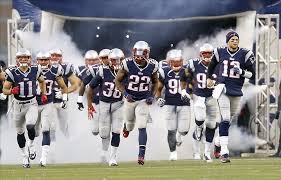 In the game ” win as much as you can” the title says it all. How you get to your goal is left up to each team. Do you disclose information, do you cooperate, how do you know if you can trust the agreement you made? Each team gets to make a decision on how much they will cooperate in each round of the game. The dynamic is predictable – once a member of the team makes an agreement and votes differently in public, trust is broken and figuring out the best move becomes increasingly difficult because you don’t know what the other person will do. This type of situation happens all too often in organizations and leads to the lack of cooperation when it really matters.
In the game ” win as much as you can” the title says it all. How you get to your goal is left up to each team. Do you disclose information, do you cooperate, how do you know if you can trust the agreement you made? Each team gets to make a decision on how much they will cooperate in each round of the game. The dynamic is predictable – once a member of the team makes an agreement and votes differently in public, trust is broken and figuring out the best move becomes increasingly difficult because you don’t know what the other person will do. This type of situation happens all too often in organizations and leads to the lack of cooperation when it really matters.
A recent study co-authored by Harvard graduate student Kyle Thomas, and professors Steven Pinker, Peter DeScioli and Omar Haque, looked at the effects of common knowledge — “the shared understanding in which two or more people know something, know that the other one knows, know the other one knows that they know, and so on — to coordinate their actions, and how people’s efforts to cooperate may fail without this infinite level of shared beliefs.” The key to cooperation may hinge at least in part in better understanding what promotes common knowledge.
In organizational life, especially those with cross functional teams or matrix structures,coordination between individuals and groups is essential to effective performance. Yet this performance hinges on being able to predict what the other person will do but that depends on what what you do. So in effect we are asking managers to be mind readers. Results of the study showed that when participants chose to keep knowledge private, only about 15% of participants chose to cooperate. With shared knowledge, researchers found that about 50% of participants chose to cooperate. And finally when participants had common knowledge, 85% chose to cooperate.
What opportunities do you see for establishing routines that lead to a culture of common knowledge in your organization? Here are a few suggestions:
- Start meetings by asking what has changed or what people know now that they didn’t know at the last meeting
- Before making decisions, go around the table and ask everyone to state what data they are using for decision making.
- Use “thinking routines” that promote reflection and a common understanding such as “I used to think and now I think.”
- Establish a culture where project relevant information is readily available and shared rather than controlled by specific individuals in the organization.
- Promote a culture that is fueled by genuine curiosity and invite participation rather than one that runs on assumptions and maintaining the status quo.
- Encourage boundary spanning rather than boundary building.




 Love them or hate them, the Patriots approach to selecting, developing and using players has proven to be a core strength of the organizations. Malcolm Butler is just the most current example of how the Patriots under Bill Bellcheck’s ability to spot talent where others don’t see it. Players understand that they need to develop to be experts at their role and that they are expected to apply that expertise in flexible ways depending on what they see on the field. “I saw Wilson looking over there,” Butler said. “He kept his head still and just looked over there. So that gave me a clue, and the stacked receivers. I just knew they were going to throw. My instinct, I just went with it, just went with my mind and made the play.” The plays are designed to be both rigid and flexible, keeping the opposition guessing what will come at them. Martha Feldman’s (UCI) research on how routines enable creativity backs up the way the Patriot’s approach the game. The coaching staff does so in part knowing the potential of the players, by putting them through practices where they try out endless possibilities that may come up during the game and then In that way, players are prepared to step in and apply their expertise flexibly.
Love them or hate them, the Patriots approach to selecting, developing and using players has proven to be a core strength of the organizations. Malcolm Butler is just the most current example of how the Patriots under Bill Bellcheck’s ability to spot talent where others don’t see it. Players understand that they need to develop to be experts at their role and that they are expected to apply that expertise in flexible ways depending on what they see on the field. “I saw Wilson looking over there,” Butler said. “He kept his head still and just looked over there. So that gave me a clue, and the stacked receivers. I just knew they were going to throw. My instinct, I just went with it, just went with my mind and made the play.” The plays are designed to be both rigid and flexible, keeping the opposition guessing what will come at them. Martha Feldman’s (UCI) research on how routines enable creativity backs up the way the Patriot’s approach the game. The coaching staff does so in part knowing the potential of the players, by putting them through practices where they try out endless possibilities that may come up during the game and then In that way, players are prepared to step in and apply their expertise flexibly.